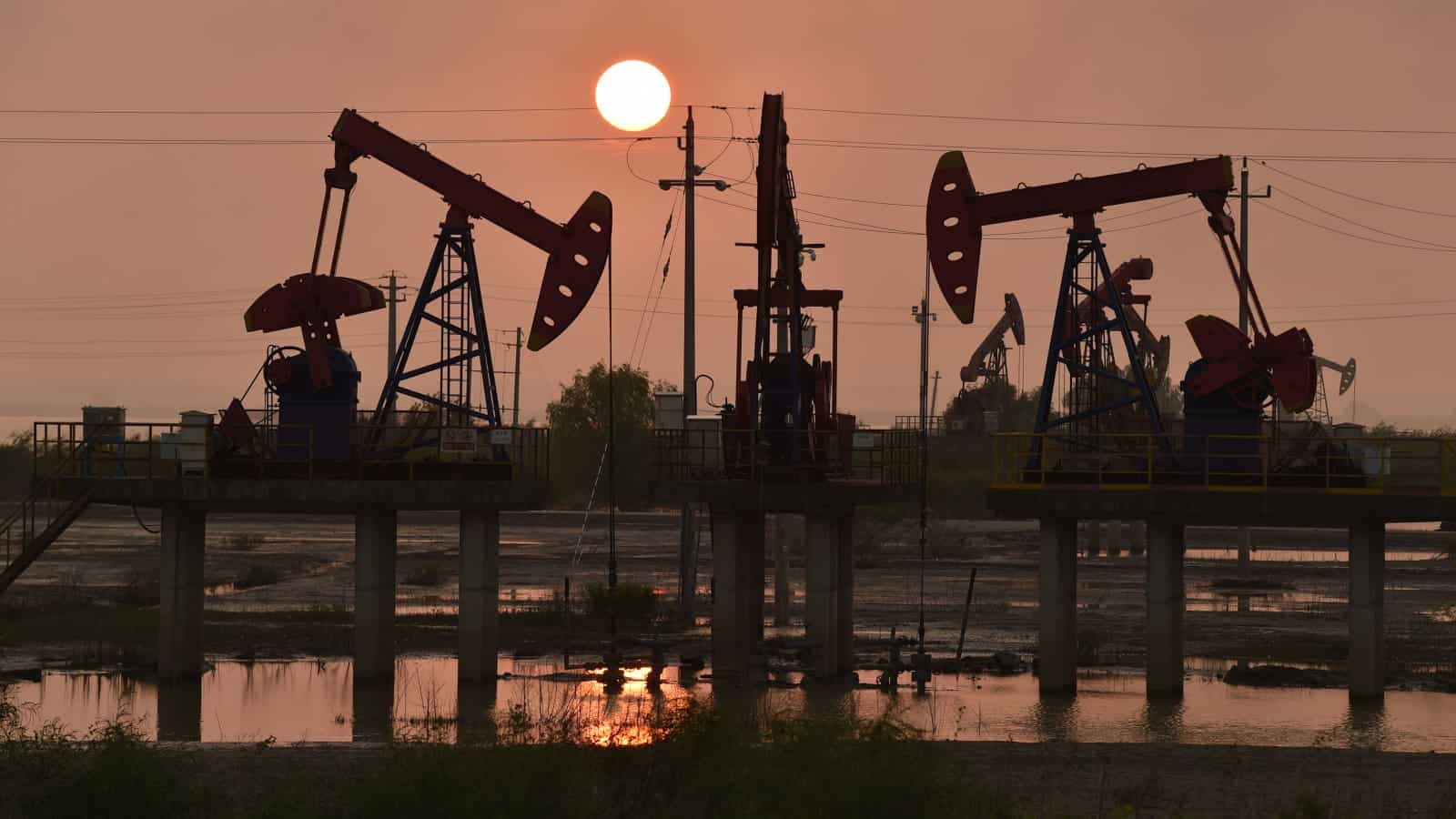Oil registered heavy losses Tuesday, building on Monday’s decline, as myriad factors weighed on sentiment, including talks between Russia and Ukraine, a potential slowdown in Chinese demand and unwinding of trades ahead of the Federal Reserve’s expected rate hike on Wednesday.
Both West Texas Intermediate crude, the U.S. oil benchmark, and global benchmark Brent crude settled below $100 per barrel Tuesday, a far cry from the more than $130 they fetched just over a week ago.
WTI ended the day at $96.44, for a loss of 6.38%. During the session it traded as low as $93.53. Brent settled 6.54% lower at $99.91 per barrel, after trading as low as $97.44.
WTI and Brent fell 5.78% and 5.12%, respectively, on Monday.
“Growth concerns from the Ukraine-Russia stagflation wave, and FOMC hike this week, and hopes that progress will be made in Ukraine-Russia negotiations” are weighing on prices, said Jeffrey Halley, senior market analyst at Oanda. “It seems like the old adage that the best cure for high prices, is high prices, is as strong as ever,” he added, noting that he believes the top is in for oil prices.
Crude surged above $100 per barrel for the first time in years the day Russia invaded Ukraine, and prices continued to climb as the conflict intensified.
WTI hit a high of $130.50 a barrel early last week, while Brent traded as high as $139.26 per barrel. Prices jumped as traders feared that Russia’s energy exports would be disrupted. So far the U.S. and Canada have banned Russian energy imports, while the U.K. has said it will phase out imports from the country.
But other nations in Europe, which are dependent on Russia’s oil and gas, have not enacted similar moves.
“It’s really a market that traded entirely on fear,” Rebecca Babin, senior energy trader at CIBC Private Wealth U.S., said of the initial spike higher amid supply fears. “Now, without a true change in the facts, we’re trading on the hope” that things won’t be as bad in the commodity market as initially feared.
“We don’t have a lot of clarity around what is really going to happen with crude supplies in the future as a result of this conflict,” she added.
While self-sanctioning has happened to a certain extent, experts say Russian energy is still finding buyers, including from India.
China’s latest moves to curb the spread of Covid-19 are also having an impact on prices. The nation is the world’s largest oil importer, so any slowdown in demand will hit prices.
A deal with Iran could also add new barrels of oil to the market. Russia’s Foreign Minister Sergey Lavrov is in favor of resuming the deal, according to Reuters.
Oil has been especially volatile in recent sessions, whipsawing between gains and losses with every new geopolitical development.
As Tamas Varga from brokerage PVM summarized: “Is it the mother of all corrections or the market is turning increasingly confident that a significant supply shock will be avoided?”
The surge in oil has pushed prices at the pump to record highs. The national average for a gallon of gas hit $4.331 on Friday, the highest ever, according to AAA. The number is not adjusted for inflation.
Prices have eased slightly since. The average for a gallon of gas stood at $4.316 Tuesday.

